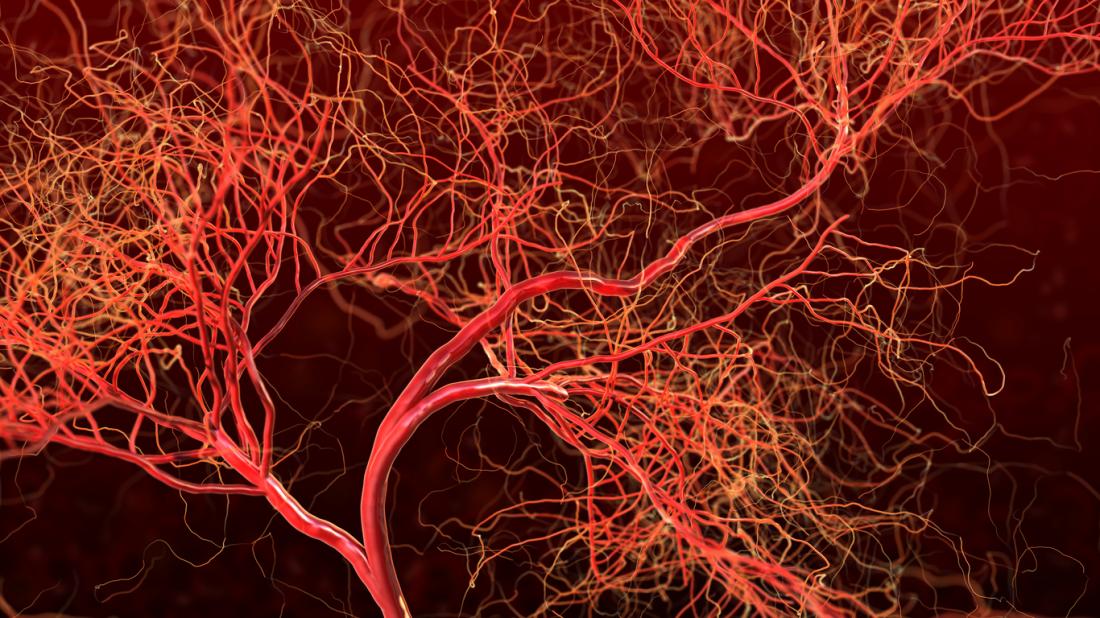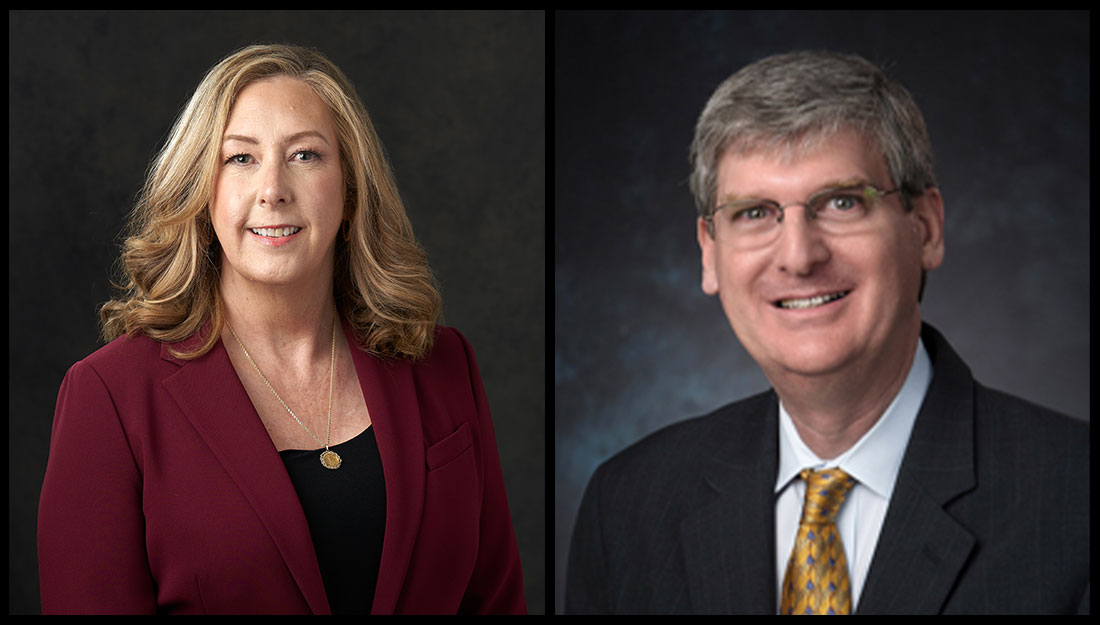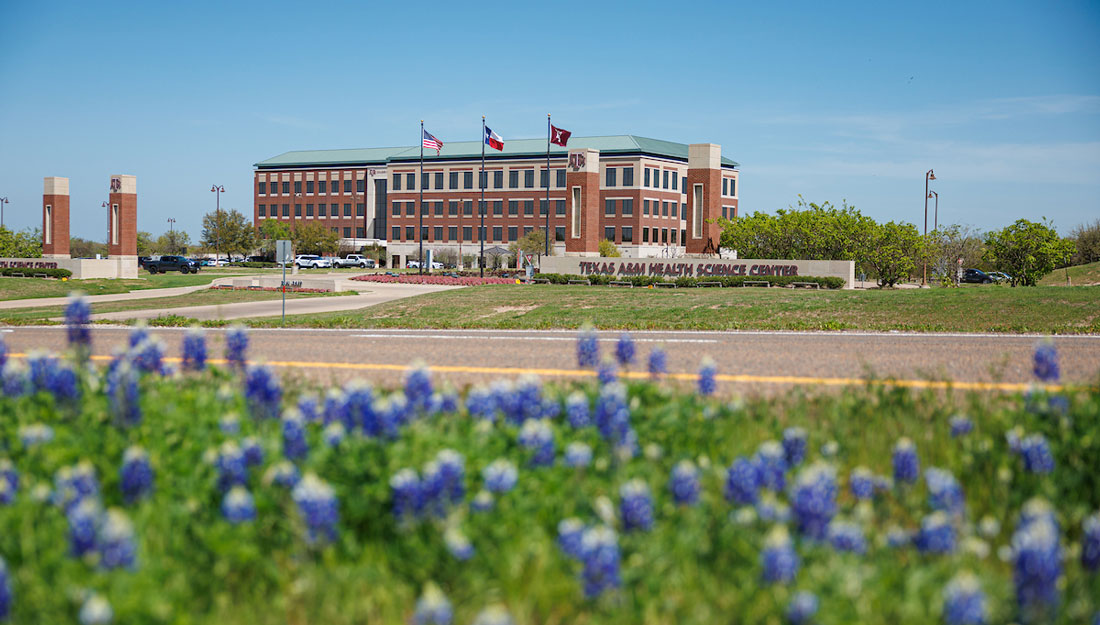- Christina Sumners
- Medicine, Research, Show on VR homepage
Blood vessel formation has implications for cancer and other diseases
Vascular biologist uses multidisciplinary approaches to investigate blood vessel formation

illustrated view of blood vessels
When you have a wound, the body’s tissue-repair machinery initiates the growth of new blood vessels to the site of injury. However, blood vessel formation, known as angiogenesis, is not limited to wound healing. It occurs in pregnancy, cancers, blinding eye conditions, and other diseases.
In cases of cancer, it is necessary to cut off the blood supply to curtail the growth of the tumor. However, in other situations, such as wound repair, increasing blood supply promotes the transportation of oxygen and other nutrients required for healing.
Despite its importance in a number of biological contexts, it isn’t clear what fundamental processes control angiogenesis in the body. To answer this question, Kayla Bayless, PhD, associate professor at the Texas A&M College of Medicine, is collaborating with colleagues in medicine and College of Engineering to investigate the molecular and cellular events that orchestrate blood vessel formation.
Although much is known about the role of different molecules (such as proteins) in blood vessel formation, Bayless explained that currently, very little is known about how these molecules work together to promote angiogenesis. Her research addresses this gap in knowledge.
“We are doing a more comprehensive analysis of the process,” she said. “What we’re trying to do is integrate events involving lipids, growth factors, cytoskeletal proteins, cell surface receptors and other proteins to give us a more complete understanding of the process.”
To provide structural support to growing blood vessels in a petri dish, Bayless and her team use scaffolding materials rich in a protein called collagen. In early collaborations with Alvin Yeh, PhD, associate professor at the Texas A&M College of Engineering, her team used sophisticated microscopy techniques to investigate the molecular interactions between young blood vessels and the scaffolding material.
“We could see how the sprouting process controlled alterations in the collagen,” Bayless said. “These were really informative series of experiments.”
To add another layer of nuance to her experimental setup, Bayless collaborated with Roland Kaunas, PhD, associate professor at the Texas A&M College of Engineering, to simulate blood flow during angiogenesis. In the body, blood flow provides important mechanical cues for blood vessel growth.
“So, we’re really moving one step closer to making our experiments even more physiological,” Bayless said. “We combine lipids, add growth factors and then, apply flow to add another key physiological component to our experimental system.”
Bayless is also working on collaborative projects that have closer applications in health care.
With Akhilesh Gaharwar, PhD, assistant professor at the Texas A&M College of Engineering, Bayless is investigating the ability of a synthetic material called nanosilicates to deliver growth factors. Nanosilicates bind easily to growth factors because of their shape and electrical properties and as a result, stabilize them. Bayless said nanosilicates might be an efficient way to deliver growth factors in people with diabetes, in whom wound healing is slower due to abnormal angiogenesis.
Bayless’ group is also testing a new biomaterial as a scaffolding for growing blood vessels. This biomaterial, developed by Sarah Bondos, PhD, associate professor at the Texas A&M College of Medicine, is made of an insect protein called ultrabithorax (Ubx). Since Ubx molecules can self-assemble into strong, elastic biomaterials, Bayless noted that they are a promising bench-to-clinic technology: “I think the next step is to assemble instructive materials (growth factors, lipids, etc.) in a way that Ubx-based materials will be useful, if implanted into a patient.”
Bayless said the opportunity to expand her research by working on projects in which she can combine her expertise with that of her colleagues has been very fulfilling: “I was trained as a vascular biologist, and my main interest is in how blood vessels assemble. So it’s been very rewarding to work with these wonderful scientists on campus that have new technologies with the potential to effectively promote blood vessel growth.”
Article written by Vandana Suresh
Media contact: media@tamu.edu


